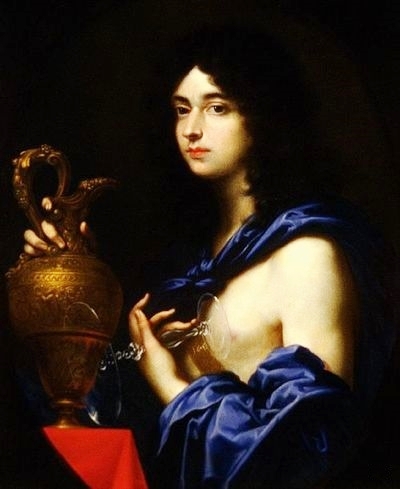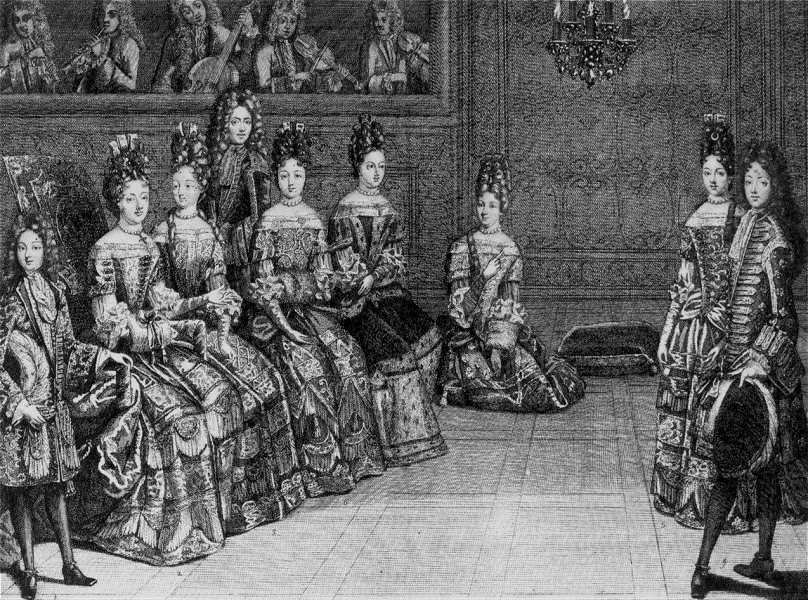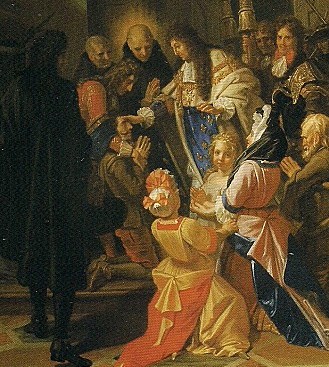The Death Of Madame
Saint Cloud, June 30, 1670, three o’clock in the morning. Henrietta of England, Henriette d’Angleterre as the French called her, Minette as she was called by her brother, closes her eyes forever. Madame, as she was called at court, being the wife of Monsieur, the King’s brother, had suddenly fallen ill the previous day, June 29, and died less than 24 hours later. Her death, or rather its cause, was the birth of a mystery.

What happened? To figure that out we have to look at Madame’s health and what she had occupied herself with in the previous months. Minette was never a healthy woman. She suffered of several maladies, general weakness, was observed to be rather thin and was prone to insomnia. In 1667 Minette began to complain of recurring pains in her side, which were followed by digestive problems, so severe, she could only consume milk or thin broth.
In spring 1670, Madame became the centre of Louis XIV’s attention. She was to act as ambassador between France and England. At this time she complained of pains in her side again, yet the prospect of going to England and seeing her family, cheered her to an extent that made them somewhat easier to ignore. Louis had in mind to draw the English to his side in a secret treaty, which would later enable him to declare war on the Dutch, without fearing the English might interfere on behalf of the Dutch. The negotiations had been underway for quite a while already and the matter was settled, all that was needed was the signature of the English King, Minette’s brother. Both him and Louis XIV agreed that it should be Minette, who brings the terms to England. Of course, this could not be done as a proper State Visit, it would have been way too suspicious, and so Louis came up with another plan. Minette was to act suddenly home sick upon glancing at the English ships in the harbour of Dunkirk.
Monsieur was not happy at all. In first he suspected his wife and his brother had renewed their affair as both of them began to meet frequently and sometimes even in secret. As he learned the truth of the matter, that of Minette’s special role, he became even more angry. His wife was to act as an ambassador and nobody asked for his permission. Even worse, he could have done the deed just as well and now was not even allowed to accompany her. He had to play along, once more. Madame was ecstatic. She could finally see her family again and, on top of that, she was important for Louis again. He needed her and she would bring him glory.
Madame left Dunkirk to cross the English Channel on May 24. Shortly after, the Gazette reported of her sudden home-sickness and how the King and Monsieur allowed her to board an English vessel in order to visit her family. Minette was greeted heartily by her brother and the rest of her family. One lavish party followed the next. Madame had the time of her life. She returned after the secret treaty was signed and reached Saint-Germain on June 18. Just as her brother had, she was now welcomed back by Louis with embraces. Monsieur was still in a foul mood. A splendid ball was held to celebrate Minette’s return, during which she bathed in everyone’s attention, especially that of Louis. From the point on which she had left France for England and during her stay there, Madame had seemed much more healthy, in a better a mood, and there were no complaints about pains in her side.
Now back in France, the pains returned. Madame wanted to follow the King to Versailles, in order to bathe in some more attention, but her husband, being aware of it, had other plans and ordered her to follow him to Saint Cloud. Both arrived there on June 24 and Madame began to complain of pains in her stomach and side once more. Those pains came this time with insomnia, a lack of appetite, a general feeling of being unsettled and nervousness. Monsieur did not fail to notice the sudden change in Madame’s condition and expressed great shock and worry as Minette’s face suddenly became oddly swollen and changed almost beyond recognition after an afternoon nap.

On June 29, a hot day, Madame asked for a glass of refreshing and cold chicory water, something she drank almost daily. On this very day however, as soon as she had drunk the beverage, she cried out “Ah! What a pain! What shall I do! I must be poisoned!”. A sudden and violent pain in her side took over her. Minette was brought to her rooms in agony, repeating over and over again that she must have been poisoned, a statement of immense proportions. As Monsieur reached the rooms of his wife, he was the first to be suspected. Madame insisted that it must have been the chicory water that was poisoned, and her worried husband ordered the rest of it to be given to the hounds at once. Nothing happened. None of them showed signs of poisoning or pain. Nevertheless, Madame was given several antidotes. Her condition did not improve in the following hours, it became worse. The King and Queen were called to Saint Cloud in the evening and Madame received the Extreme Unction. A few hours later, she was dead.
Monsieur, the first suspect, was quickly thought to be incapable of performing such a deed as his wife took her last breaths. He was very obviously in shock and showed no signs of guilt, on the contrary, he acted rather the doting husband. Yet Madame insisting it was poison and the suddenness of her demise fuelled the talk of a murder by poison further. The next suspect, and the one who is thought to have done the deed by many until today, was the Chevalier de Lorraine, Monsieur’s lover.
At the time of Madame’s death, the Chevalier lived in exile in Rome. He was said to have murdered Madame in an act of vengeance. Why? He had just spent time in the worst prison of France, was now exiled with the prospect of never returning to France and it was partly Madame’s doing. The anger Monsieur had for his wife during her last months, was not only because she was assigned as ambassador, but because she was partly responsible for his lover rotting in prison.
The accounts on how the Chevalier did it are numerous and just as various. The most common one states that he send a deadly Italian poison to France, with the help of a man named Morel, who is either a servant or a province noble depending on the account. Monsieur Morel then handed the poison to the Marquis d’Effiat, who smeared it on Madame’s cup. (You can read the statements of Saint-Simon, Guy Breton and Monsieur’s second wife here.) According to other versions, it were the Dutch who poisoned Madame on her way to France. Monsieur’s second wife wrote, long after all involved were dead, that Louis XIV himself told her it was the Chevalier, while Monsieur was told it were the Dutch.
Whether Louis XIV really believed this or not is hard to tell. Charles II, Minette’s brother, seemed to have believed it was Monsieur who poisoned Minette. The reports on the matter are vast, all somewhat saying the same, yet with little differences, like a story that is told and altered with each re-telling, adding a little here and a little there.
The autopsy performed on the dead body of Madame, showed no signs of poison. Seventeen French physicians along with an English surgeon, and observed by the English ambassador, came to the conclusion that Madame had died of natural causes. A colic and gastroenteritis. It was furthermore noted that the organs of Madame showed signs of gangrene… but still there was doubt.

Monsieur de Saint-Maurice noted in a letter to the Duc de Savoie that Madame’s stomach became oddly swollen after her dead and that, as the first cut was made, a vile scent filled the room, which forced everyone to withdraw and put masks on. He also noted that no traces of poison were found, yet says he found the discovery of a ‘hole with blackened lips’ inside her stomach suspicious, and that her body contained a great quantity of bile, along her liver being putrid. Taking this into account, a slow poisoning with arsenic seems to fit Madame’s complaints…. but so does the official version. Considering the different maladies Madame suffered of during the years, including severe eating disorders, it could also have been a combination of many that weakened her body so much, gastroenteritis killed her in the end. The physicians giving her all sort of liquids to drink, from broth to anecdotes and enemas, powders and oils, purges, and the usual blood-letting, was surely not helpful either. The symptoms Madame showed, and which fit her medical history, are that of a perforated duodenal ulcer, something that can be lethal and cause dead in only a few hours. It seems Madame also suffered of anorexia nervosa, which fits reports of her odd eating habits as well as hyperactivity, and the fact that Madame was always thin to the point of being frail. Tuberculosis might have left its marks as well, Madame suffered of it for a long time. It can attack the lungs and the peritoneum in a chronic way. One of Madame’s doctors, named Vallot, actually stated his surprise Madame had lived so long at all, saying it is nothing short of a miracle.
Poison was always the very first thing that was suspected whenever someone, who seemed somewhat healthy on the outside, died suddenly. Poison was also something everyone feared and was paranoid of. The weapon of women, or homosexuals. The latter were thought capable of performing any crime or sin, since they already performed one without regret.
Henrietta Anne Stuart was buried at Saint-Denis on July 4. She rested next to her mother, Henrietta Maria of France, until the French Revolution, when the royal graves at Saint-Denis were plundered and destroyed, the bodies thrown into mass graves.





One Comment
Robert
Excellent site, will try and come here more often. Hope you include many more characters in future, especially Catherine of Braganza. She was such an important and overlooked part of Charles II’s court who seems to have been eclipsed but who must have been acknowledged by the Sun King’s court, if indifferently, as one who had failed to produce a legitimate heir whlie France had a Dauphin before the king died in 1715. A pity Louis and William III were so against each other and James and Mary of Modena tolerated in France, not to mention the Jacobite pretenders, i much prefer their Hanoverian nemesis and overthrow at Culloden!.